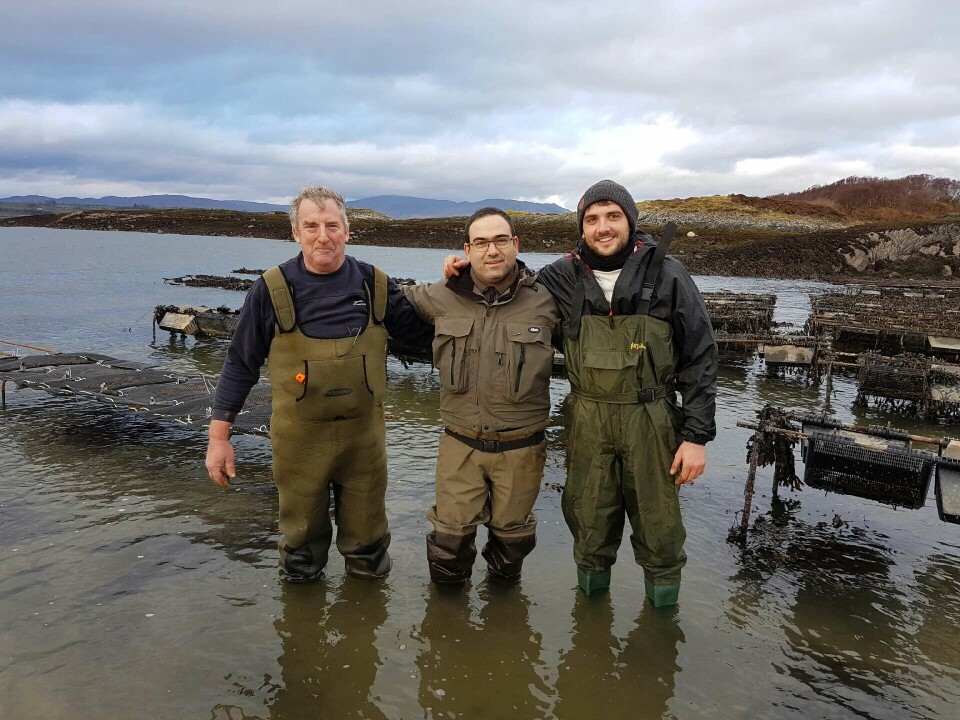
Growing head-to-head
A new study looking into three different means of cultivating native oysters (Ostrea edulis) is due to start at a site run by Lochnell Native Oysters Scotland next month, in a bid to ramp up production of the species.
The study is being undertaken by Dr Stefano Carboni, Graeme McWhinnie, from Stirling’s Institute of Aquaculture, and by Roberto Cerri (funded by the EU Youth Mobility Programme). It aims to provide scientific evidence of the relative merits of the three cultivation systems.
As Stefano explains to Fish Farming Expert: “The project will hopefully be a way of de-risking the native oyster growing business, consolidating knowledge and freeing up some of the bottlenecks that are currently preventing the UK’s native oyster growing sector from fulfilling its potential.”
The three different methods being trialled are the bags and trestles, which are traditionally used for Pacific oyster (C. gigas) cultivation; Ortac boxes, a method that has been developed by Tony Legg of Lochnell Native Oysters and has been shown to be very effective in some areas – both for the speed of growth, survival and the relatively low number of man-hours required to operate them; and a new ‘Microreef’ concept that Tony has developed more recently and holds 1500 oysters stacked in individual compartments. The latter, he hopes, could allow for the even more efficient cultivation of the molluscs.
While tests have been done on all three methods in various guises, this will be the first time that all three have been trialled together at the same site.
“We’ve never run a comparative parallel study before,” Stefano reflects, “and with the help of the site manager, John Hamilton [of Lochnell Native Oysters Ltd], we’ll be using the siblings in all three systems and will be testing for key parameters such as the growth rate and bio-chemical properties of the oysters.”
“We will also be looking at the relative reproductive development in the three systems and try to gauge which system produces the highest reproductive output – data that could be used to help repopulate areas that support the remaining natural native populations of edulis,” he continues.
The trial is being funded by Interface Food & Drink, a 5-year project created to connect the Scottish food and drink industry to the country’s universities. The team is also collaborating with Prof Trevor Telfer and Dr Lynne Falconer who will be using the same site as a case study for the EU funded Horizon 2020 project "ClimeFish" (http://climefish.eu/), which aims to help ensure that seafood production can increase in areas and for species where there is a potential for sustainable growth, given the expected developments in climate. Using data from the site, the team will develop, adapt and use biological forecasting models to predict growth and production until 2050.
The project also aims to draw up an economic model relating to the comparative costs of using each of the three systems.
“It will run from January until August and, all going well, the results will be published in the autumn of 2017,” Stefano explains.






















































